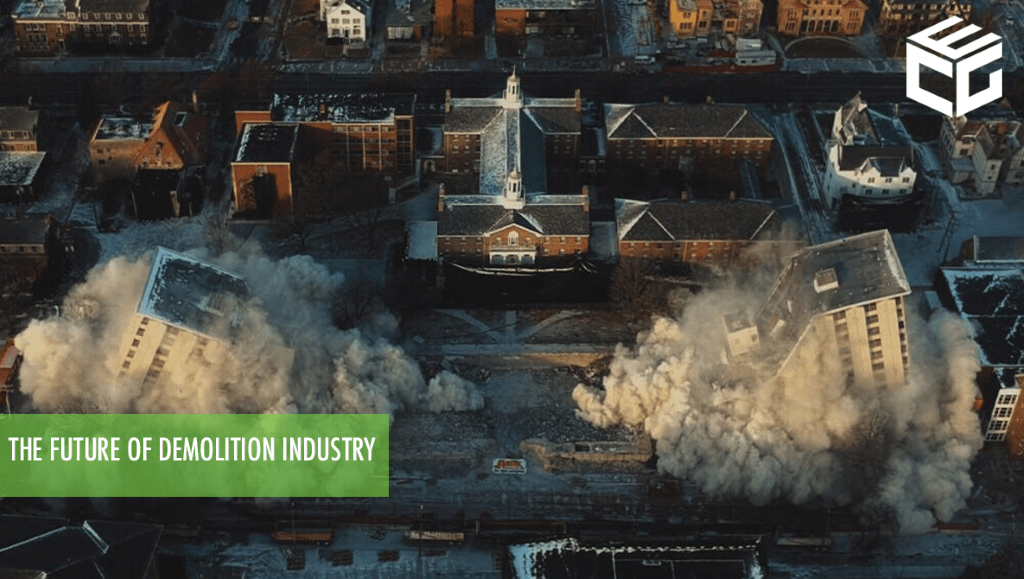The Future of Demolition Industry.
Every year projects become more complicated, and skilled workers become harder to find. That means construction is becoming more and more challenging. In response, the most effective owners are turning to technology to help them bring projects to life on time and on budget.
Improved project outcomes can only occur through understanding the most significant of the individual applications and devices that are currently available,and realizing how those technologies are already synergistically working together and giving rise to emergent processes. These processes will likely supplant many of the standalone systems that now dominate the tech landscape and will represent the new normal for project execution in the not-so-distant future. While technology can improve the design and construction process, implementation of technology must be part of a broader strategic platform.
Here’s a look at a few technologies that are changing the game now, as well as paving the way for a more connected future.
Mobile Devices and Apps
With their easy-to-use apps, they allow workers to access, document, share and edit important project information even while on the jobsite. Heavy-duty devices made specifically for field work feature rugged construction, screens that are better lit for viewing in bright daylight or poor weather conditions, and industry-specific components such as barcode scanners and radio-frequency identification readers (both of which can help track shipments, equipment and materials).
Site surveys carried out by robotic apparatus
Such devices can be used when a structure has been deemed unsafe or insecure and is therefore not accessible to personnel. The remote robotic devices safely access the structures and carry out a variety of surveying, inspection or demolition related tasks, eliminating the risk to life.
Laser Scanning
Laser scanning offers enormous efficiency when it comes to assessing sites or as-built conditions. Field measurements performed with laser scanners capture very detailed geometric information in the form of “point cloud” data—that is, a large set of points on a coordinate system. Laser scanners are incredibly accurate and thus show the true conditions of a space and/or facility. This can be particularly useful when analyzing potential clashes between exiting conditions and new building elements. The data can be fed into BIM or CAD files, leading to time and cost savings.
3-D Printers and Robotic Constructors
Extruded concrete (including concrete composites), plastics and other materials are being used to create building components and even entire buildings. For example, the world’s first 3-D-printed office was recently constructed in Dubai. Robotic arms have been used in conjunction with 3-D printers to print a variety of forms. Robots also are being used for demolition, to place bricks, excavate and do other tasks. Inventors are working on improving the agility and scalability of these activities.
Technology advances in tools and equipment
Technology has advanced in the tools and equipment and protective wear used in demolition.
Personal Protective Equipment (PPE) has never been more durable, and the modern materials used in protective wear and clothing has made it easier for operatives to remain mobile and complete their tasks while being protected.
Engine advancements in the plant and machines we use is also continually improving and fuel consumption and emissions are lower than ever before on modern machines thanks to engine technology. Advances in hydraulic technology is also improving the performance and durability in such plant.
Ask for a Professional Demolition Services
At Environmental Construction Group our team of qualified personnel has the expertise to provide turn-key services ranging from initial site assessments to complete micro-biologic decontamination.
Our team’s mission is to safely decontaminate your business environment. Call us now (562) 208 – 3729





